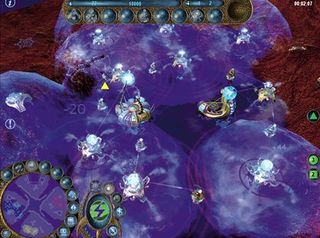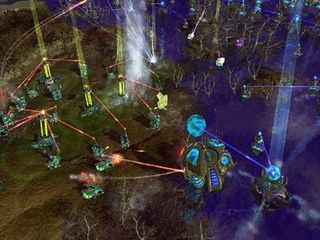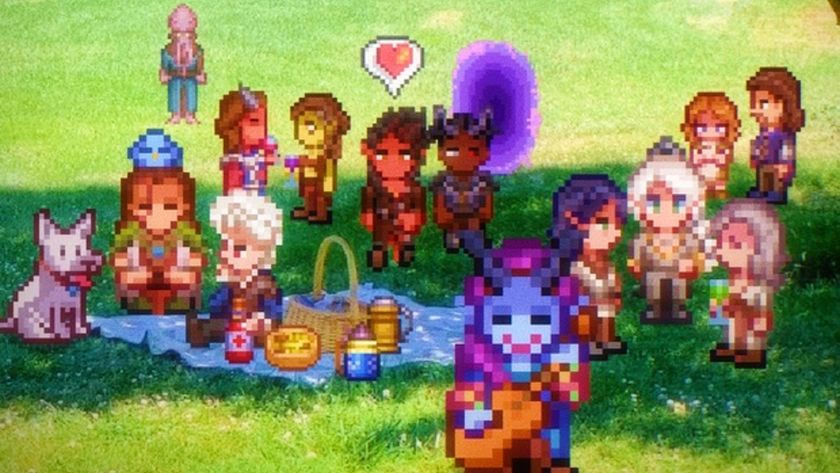12DOVE Verdict
Pros
- +
Appeals to turtlers
- +
Super weird
- +
Solid rock-paper-energy shield dynamic
Cons
- -
Deeply boring gameplay
- -
Bland
- -
uninspired art
- -
Campaigns lack dynamism
Why you can trust 12DOVE
The principle idea behind the Perimeter games is terraforming: transforming hostile terrain into something useful for RTS base-building. The original saw you smoothing over the surface of alien worlds so that you could fly a floating city across the map. Perimeter 2 uses the same idea, but with some significant changes. The flying cities have reached their destination, and now two factions are duking it out for control of that promised planet: New Earth. Terraforming is their most important tool.

This time, rather than transforming terrain to subdue a hostile alien world, you’re using it to create either land, or water, depending on your faction. The Spirits create land, and their power nodes can raise plateaus out of the water and extract energy from the ground. The Harkback meanwhile flood the terrain, and their structures collapse the ground to water level, or slowly flood it. Both factions are able to dig for hidden resources, allowing their tech trees to expand as they build.
It’s the ultimate turtling game, in that you have no choice but to build huge grids of power nodes and defense turrets and to use the titular Perimeter shields to defend your base in times of crisis. Otherwise it’s a remarkably standard RTS. You build your base, pump out your units (which can transform, but are not totally modular as in the first game) and save up for high-end super-weapons. Your energy reserves, increased by building power nodes, are your only resource. And everything draws on that one reservoir. Expanding aggressively – and terraforming endlessly – is the only way to ensure victory.
The other thing veterans of the original are likely to remember is that it was distinctly mad. The enemies were the fears and dark dreams of the floating-city residents expressed in material form: giant swarms of spiders and nightmarish Chinese dragons. Here the enemy is simply your opposite faction – both of which are very similar to play. Aside from that, the game is trussed up in waffling fictions of pseudo-religious gibberish, which go beyond the weirdness of the original game into a kind non-stop bafflement.

Sadly, this sequel is a lesser game in almost every way. While the rock-paper-energy shield dynamic is solid and sensible, it’s also deeply boring. There’s no mad spark to it, as in the original. Nor does it look particularly interesting: the visuals are bland, factory knock-off neon sci-fi. The campaign missions are utterly lacking in dynamism, and the floating, weightless nature of everything makes this a joyless experience. There’s a flicker of the old magic when we see the terrain-shattering super-weapons, or when those energy fields go up, but it’s impossible not to be bored after just a few hours of play. It’s similarly impossible to recommend this to fans of the original, or indeed fans of anything else.
Apr 14, 2009
More info
| Genre | Strategy |
| Description | This overly traditional strategy game offers very little new. |
| Platform | "PC" |
| US censor rating | "Everyone 10+" |
| UK censor rating | "" |
| Release date | 1 January 1970 (US), 1 January 1970 (UK) |

GameSir Cyclone 2 review: “The checklist this brand has built a reputation on”

Assassin's Creed Shadows director says the dreaded yellow paint was only added because "players were really struggling in playtests"

Following "mistaken" DMCA from D&D publisher Wizards of the Coast, Stardew Valley player behind Larian-approved Baldur's Gate 3 mod assures work will "resume as scheduled"










